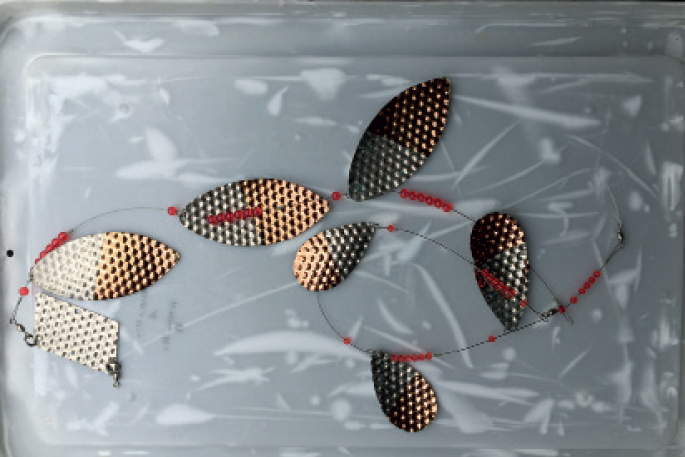I wonder how many fishers use the same techniques across sea fishing and freshwater angling?
Or do most have two separate collections of equipment and methods?
I have recently used an old lead line to troll for kahawai and have enjoyed success when the kahawai were not evident on the surface.
I trialled three lines and the lead line would have had five times the success versus the surface-trolled lures when there was no bird sign evident.
When the fish were schooling on the surface, both methods were equally successful. The results were similar for skipjack tuna and albacore so having the lures slightly deeper does seem worth the effort. I’ve had some bust offs so am unsure of the breaking strain of the leadline or if the age of it could be a contributing factor. Perhaps it’s time to invest in some better line.
Trial and error
Another method ‘borrowed’ from the trout fishing fraternity is the use of a trout fly that imitates whitebait.
The grey ghost fly has been particularly effective during the whitebait season when kahawai terrorise the whitebait schools. Having such a proven fly which so closely resembles what the kahawai are feeding on has been very successful.
At times when the kahawai, trevally or mackerel are on the surface herding krill, they will not often take a bigger lure.
During these times a slow trolled tiny fly that resembles krill works a treat. I am unsure of the name of the fly and have lost several so I would suggest any tiny fly would be ideal.
Using such a fly to catch jack mackerel has also been used to advantage by friends, especially at night around lights.
They have had some great sport fishing using fly rods casting among the schooling fish. Perhaps squid could be targeted as well as they are often near such a light source.
Any lure that can glow obviously appears more attractive to these species. I have tried with mixed success the use of down riggers after bringing two sets back from Canada where they are used for deeper water trolling.
Experiments continue
I need to experiment with slow trolling live baits for kingfish when they are in deeper waters. I did have some problems when the weighted ball hit the top of the reef we had been trolling over and the vibrating wire did not appear to be enticing or appealing.
With a range of bigger lures available I will be trying various combinations and methods this summer.
When stray lining in a big current, the burley container can be deployed deeper with the wire line against a wider rope.
I am thinking of lowering my witch doctor game fishing teaser possibly with a lure and/or live bait attached on a trace in current to see if this is appealing to kingfish.
Worthy of more experimentation are lowering lures to bait fish showing in deeper water. Such species as tuna could be deeper down as often they only appear on the surface for short periods so the down riggers could be deployed to advantage using the sounder to indicate the ideal depth.
The Canadian salmon flashers which I saw used in the Great Lakes could also have potential. There are a huge selection of these flashers ranging from single flashers to those on a wire trace with several circulating discs which flash to imitate fish.
I tried one with a live bait attached on a trace so the swimming bait spun the flasher. Unfortunately a shark took all the tackle so I am awaiting new stock to further experiment with these.
Hung from a float with a bait live or dead could also be a possibility as I note from some spearfishing programmes they use such a device to attract pelagic species in deep water.
Fly fishing
Jigging for trout has been especially successful over recent years and this method has been utilised by salt water anglers for sometime in deeper waters. In shallow waters, such as estuaries and harbours near mangroves, there have been reports of successful catches fly fishing some distance from the fish, which can be easily spooked if you are too close. There could be potential for fly fishing for flounder with a fly that resembles what they are feeding on such as small crabs and shrimps.
Many folk near marinas or waterways or in harbours see mullet and as they will not readily take a bait perhaps a fly could be enticing to them. They would be great to take on a fly rod.
I am unsure of the methods used when harling but no doubt such techniques could be adapted for salt water use, especially in harbours or around islands.
No doubt many other anglers have adapted fresh water techniques to salt water and will continue to experiment and trial.



0 Comments
Leave a Comment